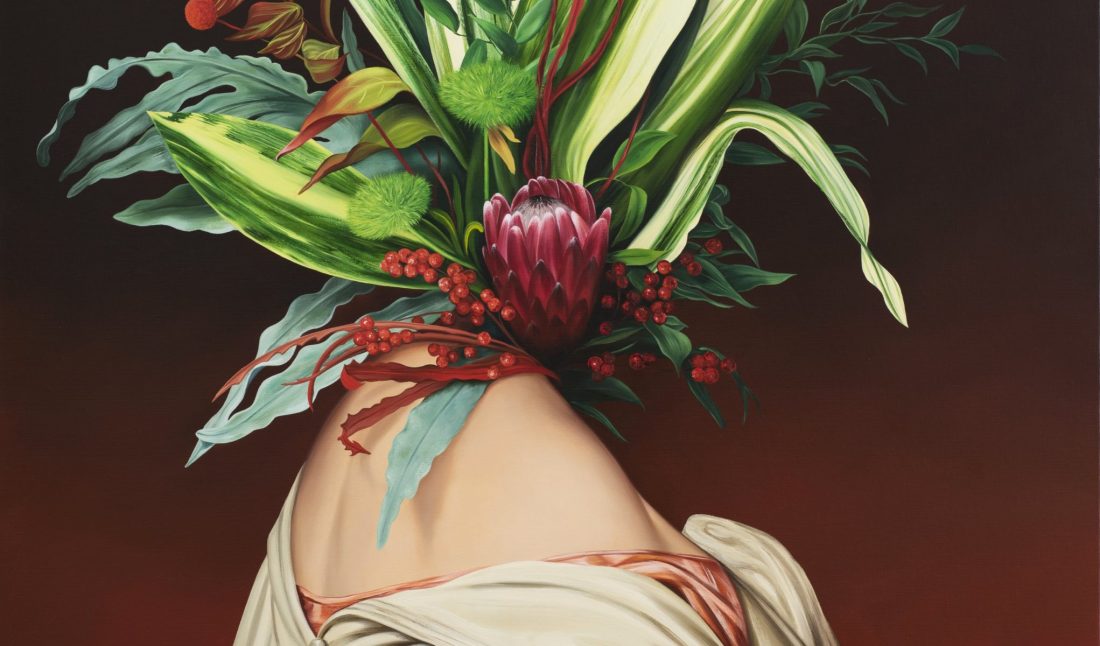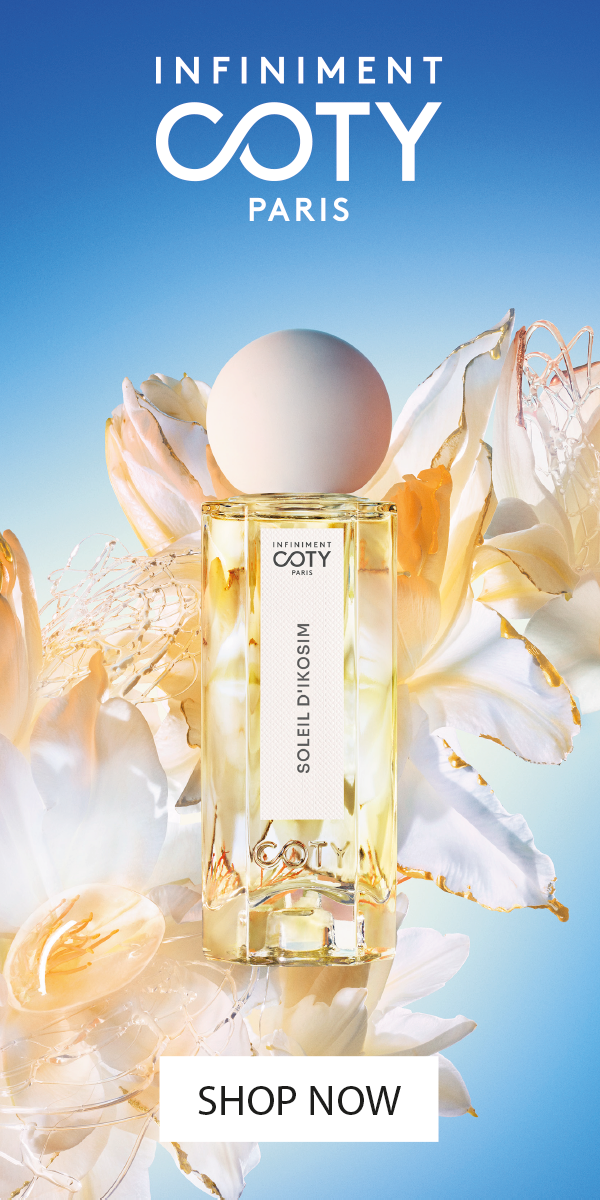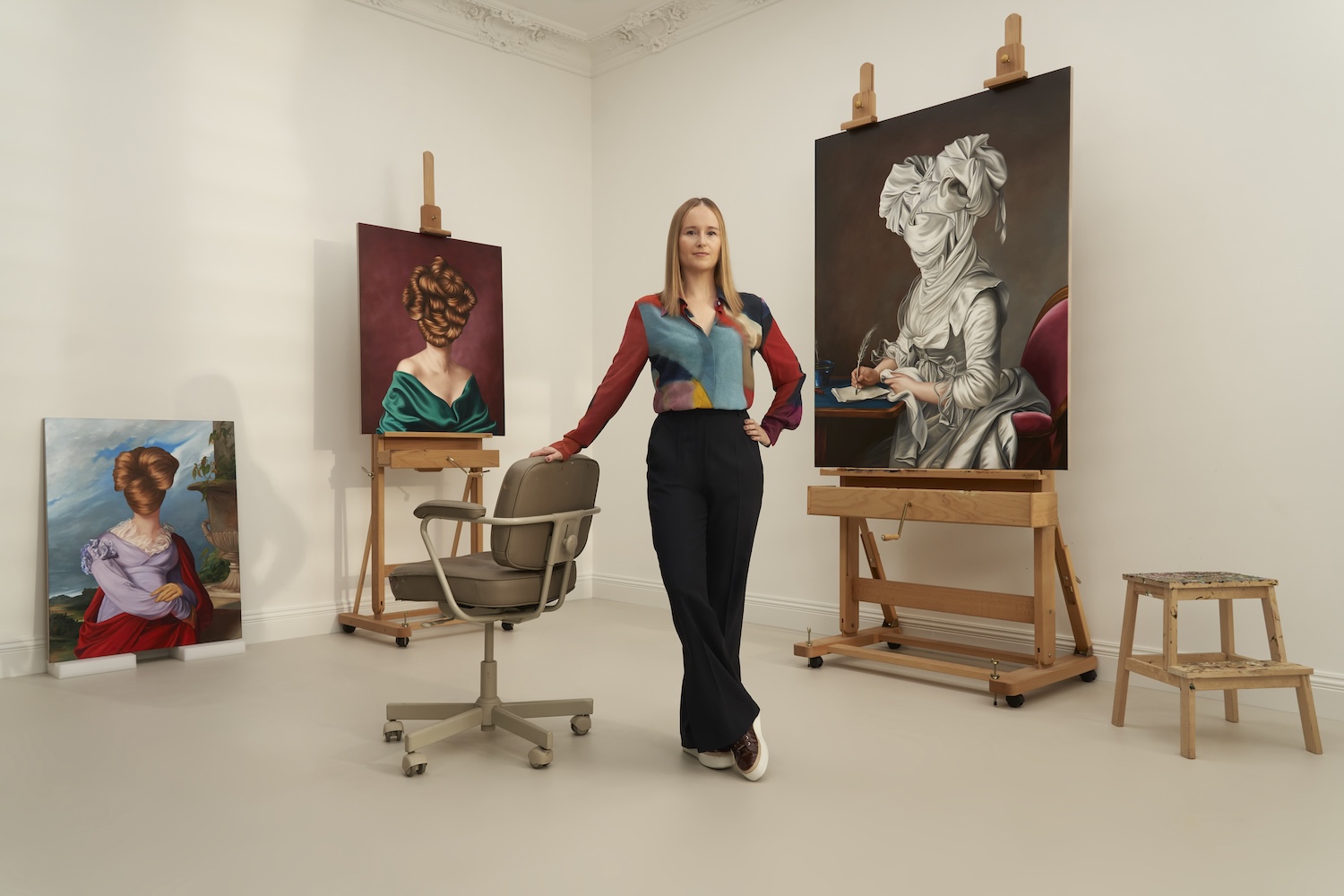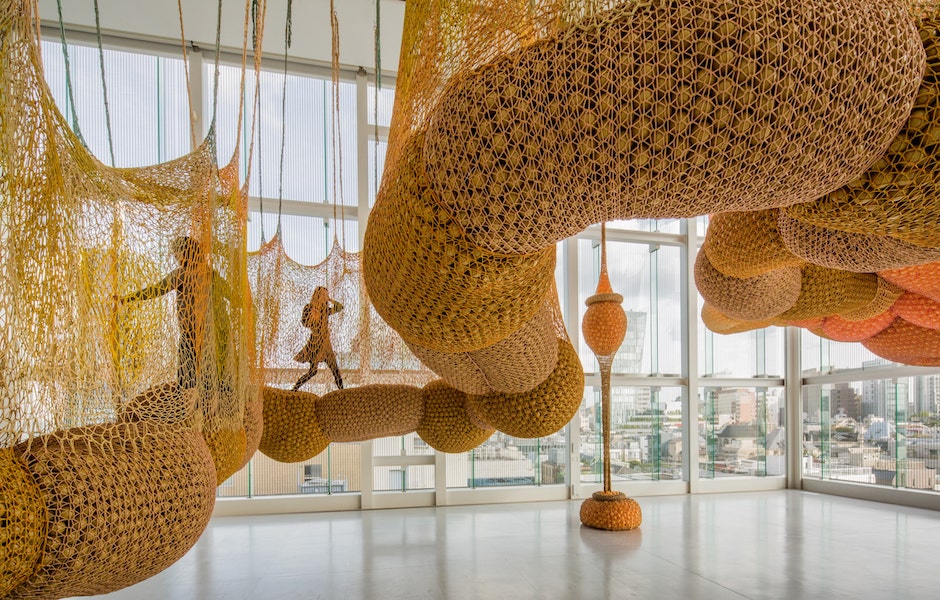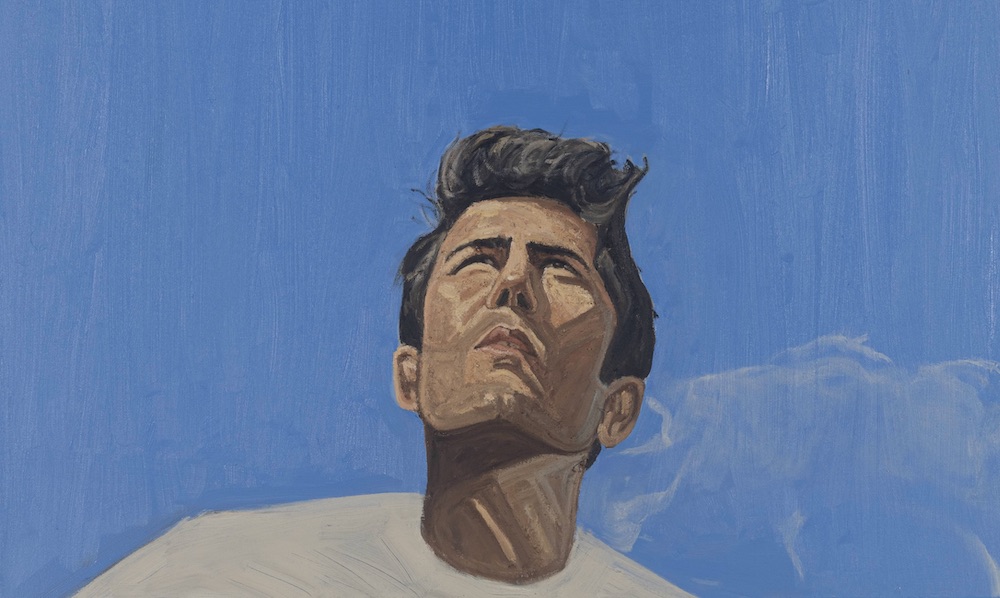The surreal artworks of Ewa Juszkiewicz are an amalgamation of historical and contemporary portraiture. Often depicted with distinct brushstrokes are women with faces covered by elaborate hairstyles or a lush collection of florals. Rather than highlighting norms of beauty like sultry eyes, sharp noses, and pouty lips, Juszkiewicz’s peculiar paintings tell a different story—or retell an old one. Because of her fascination with limitations for women in portraiture of the past, the Polish artist instead considers the cultural importance and afterlife of the painting, ridding it of its initial oppressed storyline. Here, with traditional elements and modern concepts combined, women from the 18th and 19th centuries get a second shot at a narrative without gender and constraint at its forefront.
Her works show a style born from her interest in the past yet promise to the future. Through classical composition and traditional painting techniques, buttoned-up fashions are no longer a form of suppression, and the hybrid of the past and present forms a renewed idea of beauty. Ahead of her solo show in 2023 at Gagosian Beverly Hills, Juszkiewicz shared with Whitewall how her paintings confront stereotypical ideas of women’s beauty, and how in becoming a mother she reconsidered her own appearance.
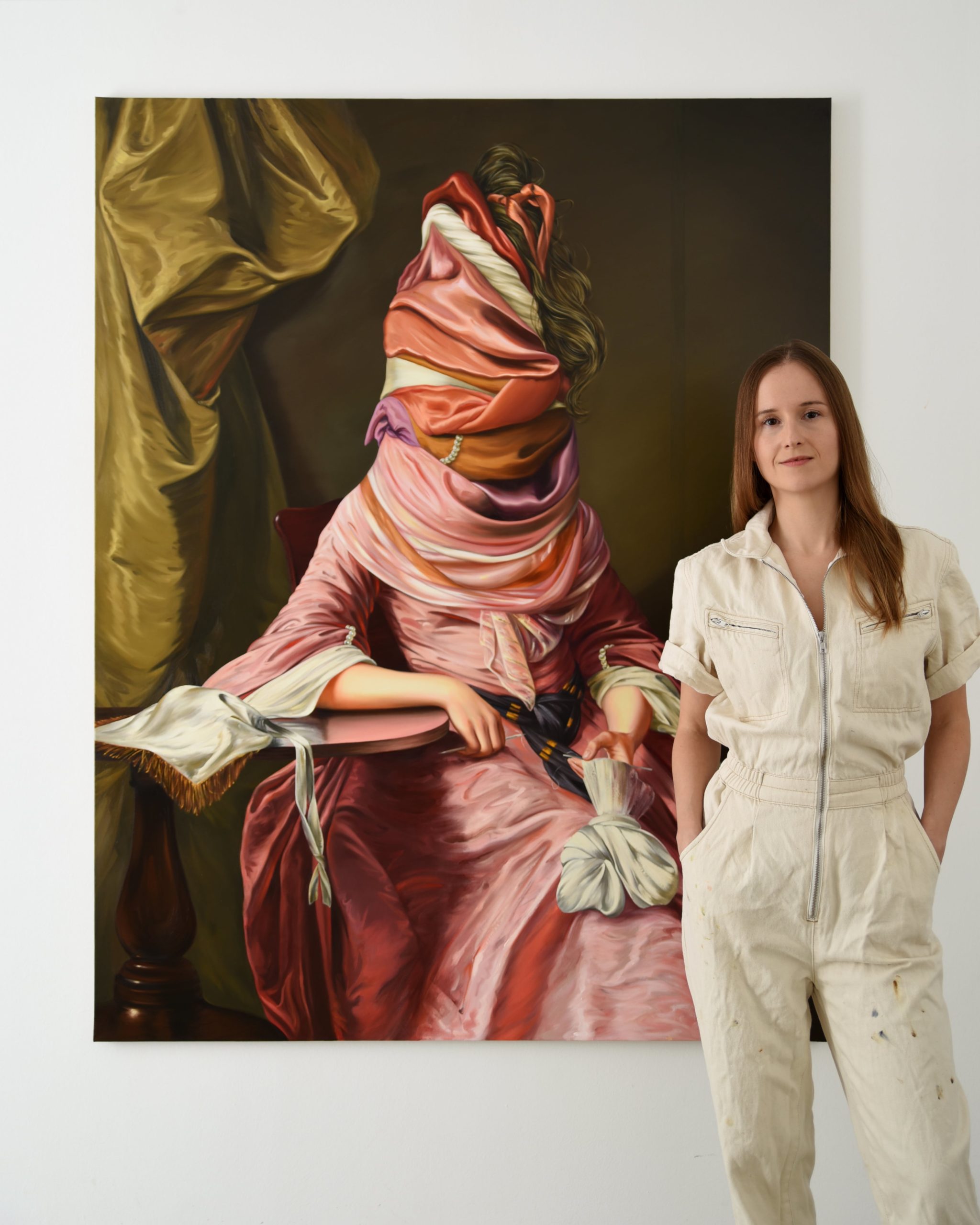 Portrait in the studio, © Ewa Juszkiewicz.
Portrait in the studio, © Ewa Juszkiewicz.
WHITEWALL: Your approach to portraiture adopts visual conventions but brings the piece into the present, encouraging the viewer to consider the “cultural afterlife” of the image. How did this idea first come about?
EWA JUSZKIEWICZ: I’ve always been interested in history. I like time traveling, as the past intrigues me. Old painting often means amazing craftsmanship, extraordinary precision and color, and a magical, unique aura. My approach to portraiture was born on the one hand from my fascination with old portraits, and on the other hand from the awareness of the limitations imposed by the canon. Looking at historical portraits from today’s perspective, it’s impossible not to think about the patterns in presenting images of women, about fashion as a form of oppression, about the situation of female artists in the past. That’s why I felt the need to establish a direct dialogue with 18th- and 19th-century paintings—to work on the basis of these portraits and to create my own story based on them.
WW: Why is it important for you to simultaneously explore a hybrid of contemporary culture and historical imagery?
EJ: For as long as I can remember, I have been attracted to remix aesthetics, hybridity, and multilayeredness. In the visual arts, as well as in fashion and design, the most interesting things always result from a kind of collage—a combination of traditional elements with modern concepts. We might even say that all contemporary culture is a culture of remix. In my works, I retain the conventions of historical paintings in some parts, through classical composition and traditional painting techniques, but I turn some elements upside down and replace them with my own contemporary ideas. By creating hybrids, I go beyond the canon and conventional patterns of beauty. At the same time, by following the brushstrokes of a painter from the past, I enter into a dialogue with tradition, looking for some kind of connection and common experience.
WW: How do your images reclaim the narrative of women?
EJ: History has overlooked women for many generations. Their roles in science or culture have been, and sometimes still are, marginalized. Therefore, addressing the issue of the domination of the male narrative and regaining the place of women in history remains extremely important today. By transforming and reinterpreting female portraits that are well known from the history of art, I present them anew, giving these images new content and meaning. I reclaim the narrative of women, going beyond the accepted canon and breaking with stereotypical perceptions of femininity.
WW: Your portraits feature women with their faces cloaked with hair, fabric, foliage, and more. Why is this imagined storyline something you decided to leave up to the viewer?
EJ: Surreal, dreamlike, and ambiguous depictions have always fascinated me. By transforming historical portraits and creating alternative images on their basis, I want to draw attention to the clichés and conventions according to which women have been portrayed in the past. I wish to deprive these old images of obviousness and change how they are perceived. My goal is to release individuality, emotions, and vitality hidden behind the canon and tradition. I think that only by breaking the established rules and by disrupting a certain order can we look at things deeper, and get to their essence.
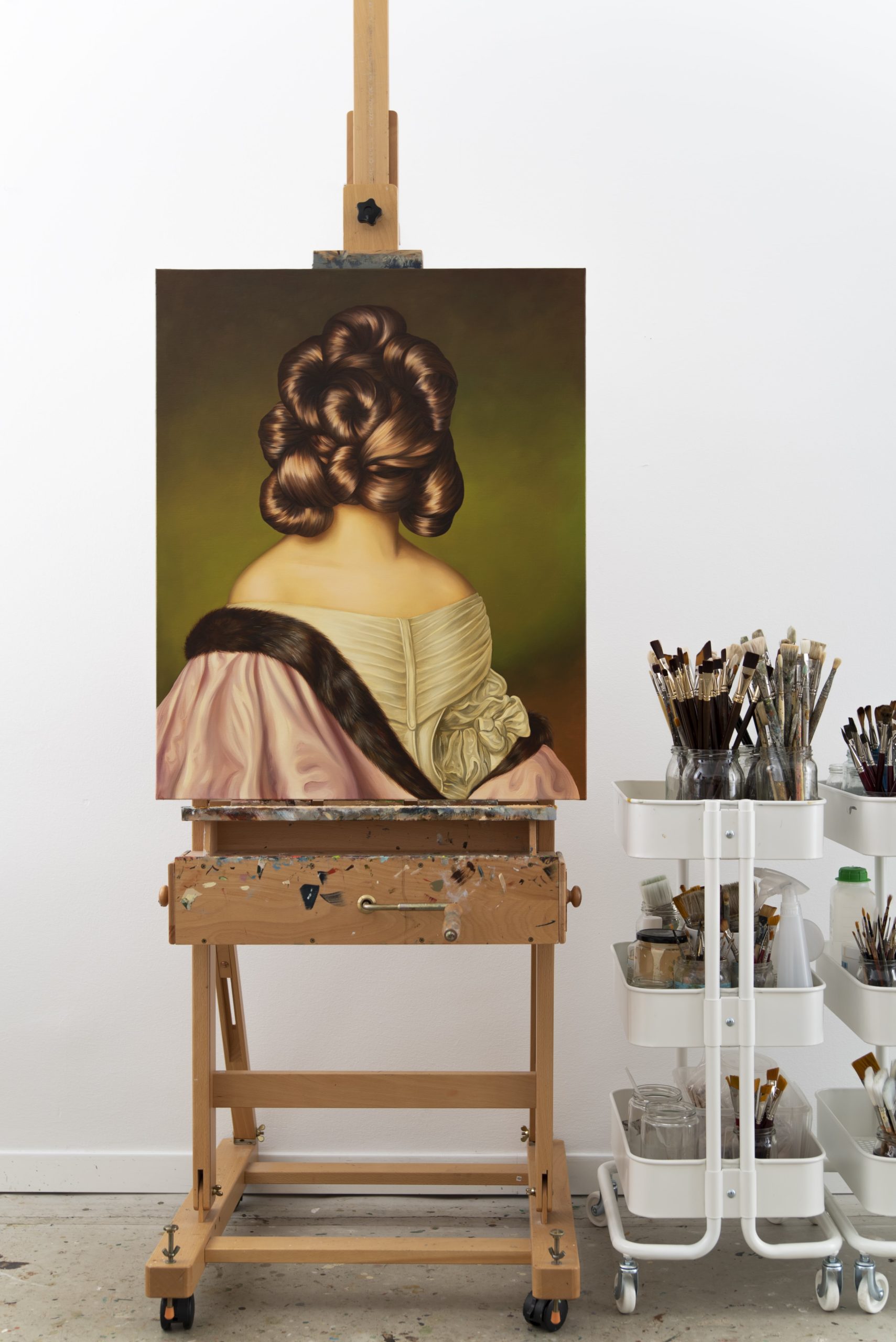 Studio view, © Ewa Juszkiewicz.
Studio view, © Ewa Juszkiewicz.
WW: You mentioned that upon looking at paintings of women, you felt they all looked the same, yet yours were “a desire to break free from the norms imposed on us by our fashion and culture.” How are you personally breaking free?
EJ: Today, there is obviously a lot of pressure on women, too. A young appearance, a perfect body. Furthermore, women are expected to be perfect in all aspects of our lives. It’s not easy to meet these socially imposed expectations, especially in the era of social media. The unrealistic beauty patterns promoted on the Internet and the emphasis on physical appearance can be difficult, especially for teenagers. Establishing distance and understanding has been a way for me to break out of these snares that contemporary culture imposes on us.
I recently became a mother, and the experiences related to pregnancy and motherhood helped me a lot in releasing this pressure of appearance. The way I perceive my body has changed, and today I look at my body in a more grateful way. I see the changes taking place in my appearance as a fascinating process and a record of my personal history.
WW: You’re currently renovating a historic space in the center of Warsaw to become your new studio. What’s it like?
EJ: It’s in a restored 19th-century tenement house, built in imitation of 17th-century palaces. The whole process of renovating this building was interesting; most of the space was designed to resemble the original interiors, including the restoration of richly decorated stucco. Like in my paintings, the interior of my studio is a combination of historic and contemporary design.
WW: What type of first impression do you hope the viewer has with the subjects you paint?
EJ: Historical paintings may seem obvious and archaic to some people. Therefore, they don’t attract enough attention and we don’t think about their message. Basing my paintings on portraits that are well known from the history of art and making peculiar interventions on their ground, I hope to intrigue my viewers and revise their understanding of what is widely recognized and familiar. My intention is to show how images from the past resonate in the collective consciousness and how they strengthen certain clichés and patterns. I want to encourage viewers to reflect on history. Finally, I hope they find universal content in my paintings and references to the present.
WW: Do you feel a sense of yourself in the images you paint?
EJ: Of course, my paintings are very personal. They reflect my experiences, my fears, and fascinations. This is the magic of painting, in my opinion especially of oil paints—in every brushstroke there is a trace of my emotions and experiences. It cannot be fooled or faked. In painting, it’s impossible to pretend, as an artist’s individuality is recorded in every move, at every step.
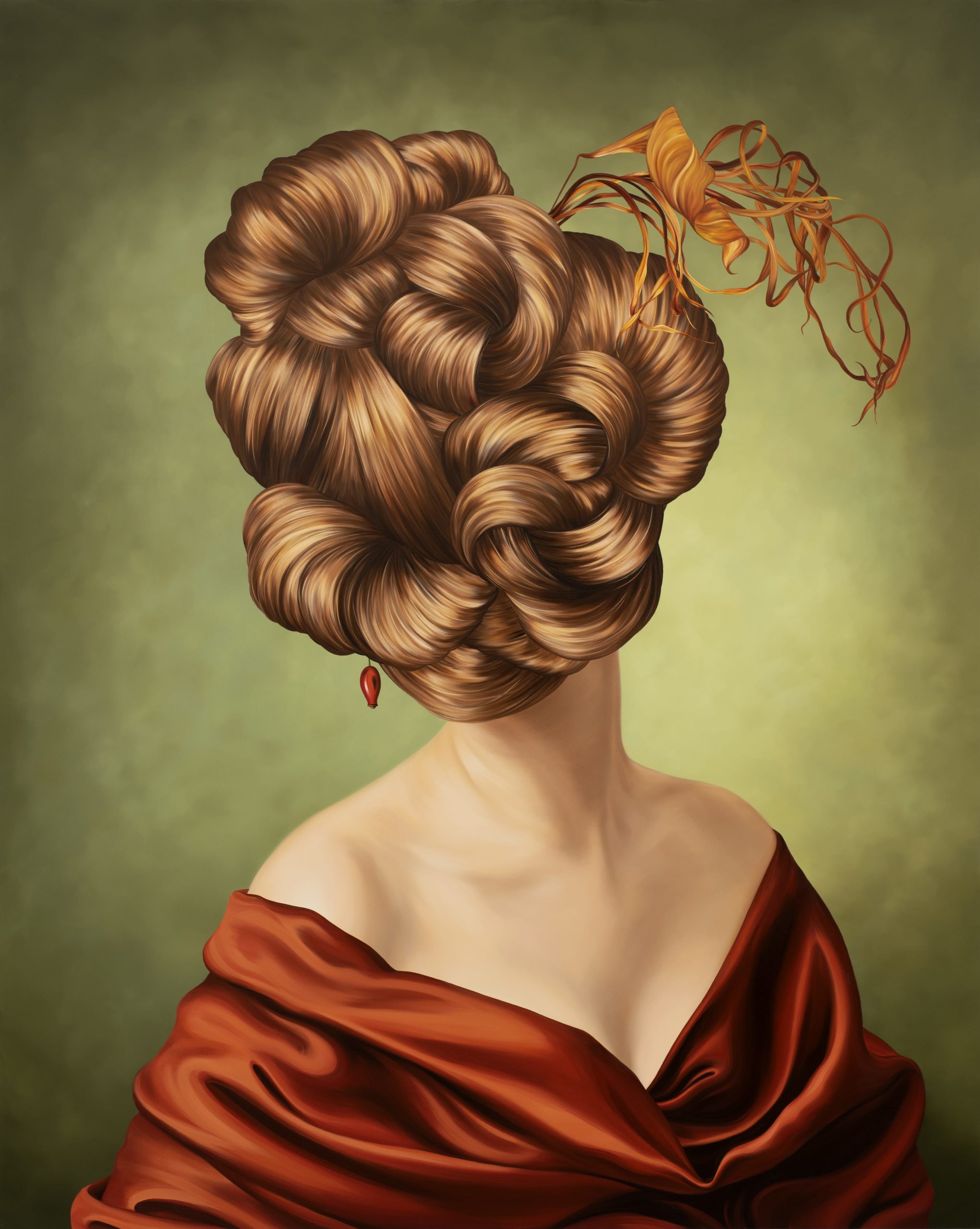 Ewa Juszkiewicz, “The Rose Hip,” 2022, 200 x 160 cm, oil on canvas; © Ewa Juszkiewicz, courtesy of the artist and Gagosian.
Ewa Juszkiewicz, “The Rose Hip,” 2022, 200 x 160 cm, oil on canvas; © Ewa Juszkiewicz, courtesy of the artist and Gagosian.






